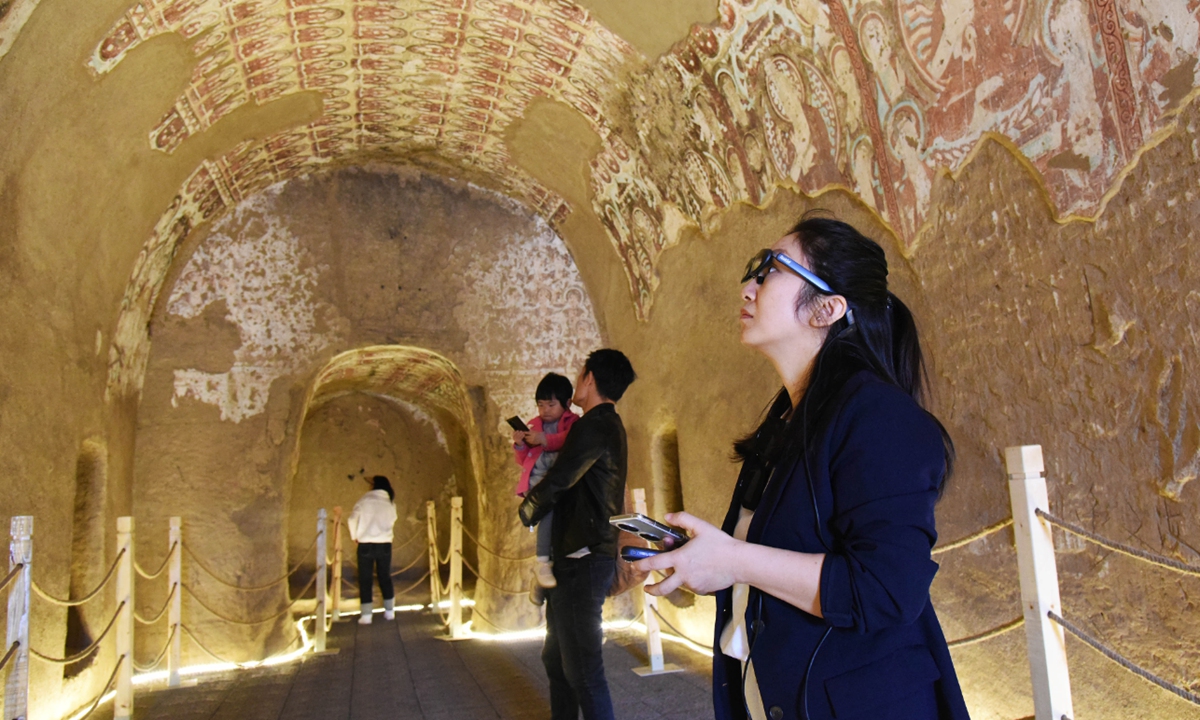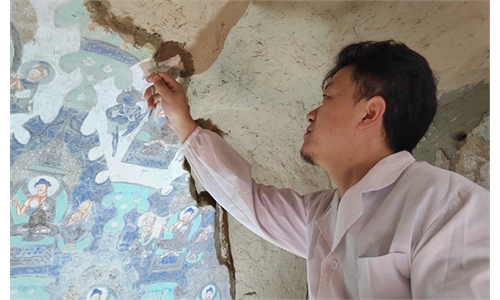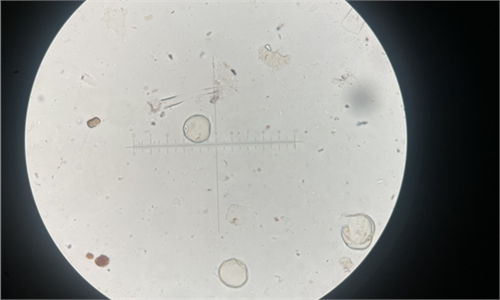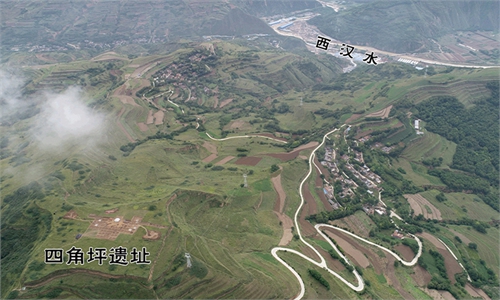ARTS / CULTURE & LEISURE
Ancient Silk Road grottoes in Xinjiang open to public
AR tech brings ancient murals back to life

Ya'er Lake Grottoes in Turpan, Northwest China's Xinjiang Uygur Autonomous Region Photo: VCG
Following AR (augmented reality) digital reconstruction efforts, the Ya'er Lake Grottoes in Turpan, Northwest China's Xinjiang Uygur Autonomous Region has recently reopened to the public.A pearl of the UNESCO World Heritage site known as the Jiaohe Ruins, the Ya'er Lake Grottoes is famous for its Buddhist murals and multi-language inscriptions featuring Chinese and Sogdian, an ancient Eastern language branch that belonged to the Iranian language family during the ancient Silk Road exchanges.
The site's digital upgrades have established an AR exhibition system that helps "digitally recover" the murals, Wang Jiandong, the project's lead and director of the Cultural Relics Management Institute of the Jiaohe Ruins, told the Global Times.
"We've restored the faded colors and the missing lines of the murals. Now, visitors can see the original appearance of these ancient artworks simply by putting on high-tech glasses," Wang noted.
Noting the visuals seen through the high-tech glasses were "incredibly lifelike," Wang Juan, a tourist told the Xinhua News Agency, that the grottoes' new digital showcase presents an immersive experience for visitors to learn history and see the digitally restored Buddha statues.
Although the site's AR showcase took only a year to establish, the director noted that "digital recovery" has been a long-standing mission that was first established around five years ago.
Take the restoration of the grottoes' No.4 cave as an example. Two types of digital efforts were involved in restoring the site's murals. The first involved collecting digital data of the cave's structure, after which experts established a high-definition image dataset of the cave through means such as 3D and HD scanning.
Rich with chambers containing Buddha motifs, the No.4 cave boasts around 110 square meters of murals. Through painstaking data collection efforts, Wang's team analyzed the images of each Buddha figure, which enabled them to digitalize the cave's original appearance.
"Through analyses, we found that these figures exhibit different horizontal and vertical orientations. Their postures and preservation conditions were varied too," Wang said, adding that digital restoration of the site aims to establish a virtual archive of the Ya'er Lake Grottoes.
The Ya'er Lake Grottoes complex, which was constructed in a cliff, preserves a total of 22 individual caves, which are vertically stratified into two tiers. Due to its special geographical location, prior to the reopening, Wang and his team had reinforced the architectural structure of the site. These efforts are all dedicated to making this "important grottoes site be known by more people."
"Compared to well-known sites like the Dunhuang [grottoes], the Ya'er Lake Grottoes are remote and not as popular, but its murals portray rich cultural history too," Wang emphasized.
The Ya'er Lake Grottoes originated in the Sixteen Kingdoms period (222-589). Historian Fang Gang told the Global Times that the site's mural paintings were a "fusion of aesthetics spanning dynasties and living proof of how diverse cultures converged along the ancient Silk Road."
"It is an epitome of ancient Buddhist beliefs and the Jiaohe Ruins were even more significant since they were once an important city along the Silk Road," Fang noted.
The Jiaohe Ruins are also the world's largest, best-preserved, and most ancient surviving earthen city complex. In 2014, the Jiaohe Ruins were added to the UNESCO World Heritage list. The Turpan Basin where the ruins are located contains 14 documented grotto complexes with more than 400 caves in total. The basin was a vital cultural hub connecting Chinese and Central Asian civilizations along the ancient Silk Road.
"Turpan now has become one of the most publicly loved and accessible cave sites in Xinjiang. We aim to use more digital and creative means to not only restore relics, but also boost local cultural tourism," said Wang, adding that in the future, the conservation and digital presentation of the Ya'er Lake Grottoes will be carried out "concurrently."



